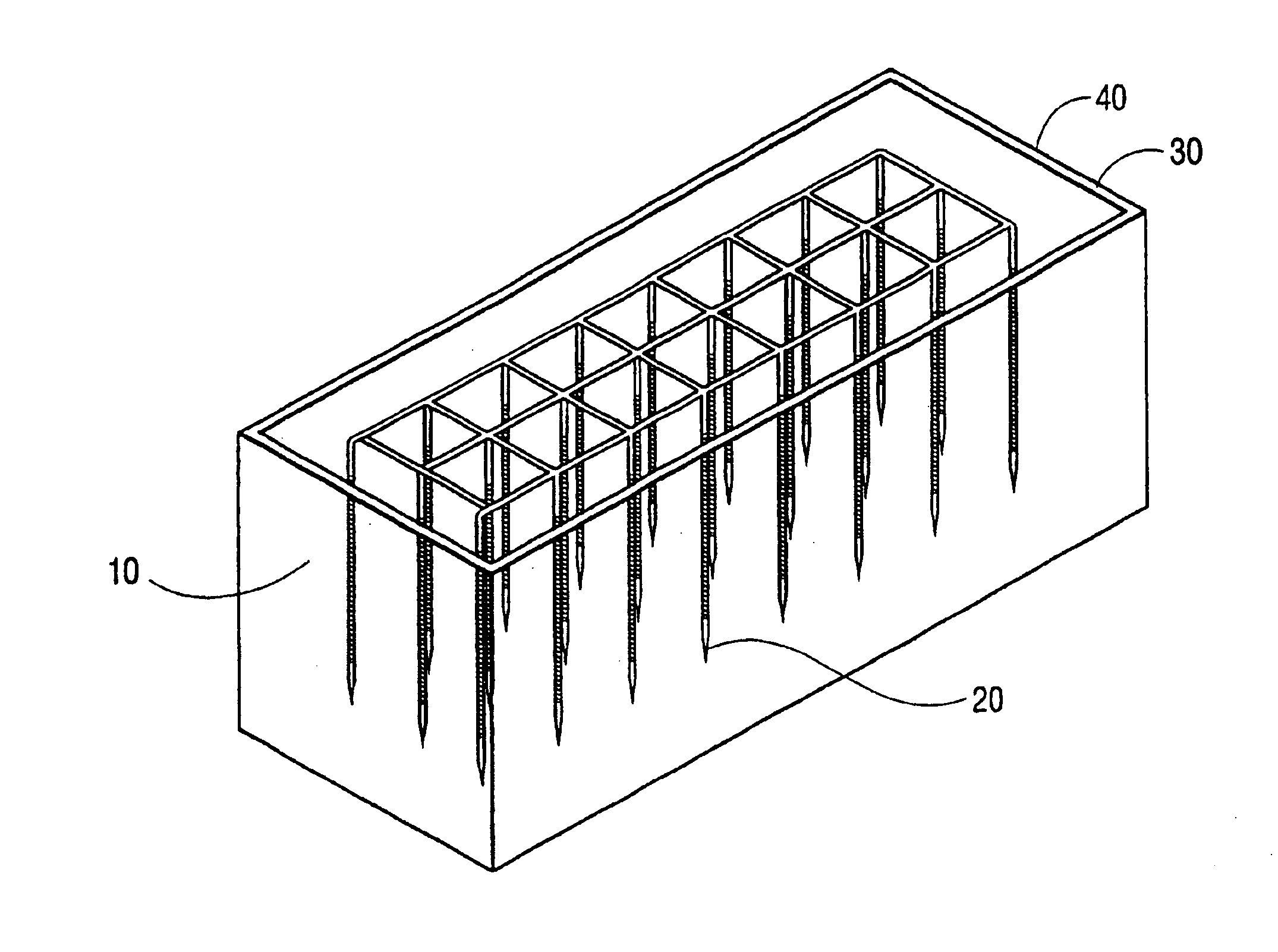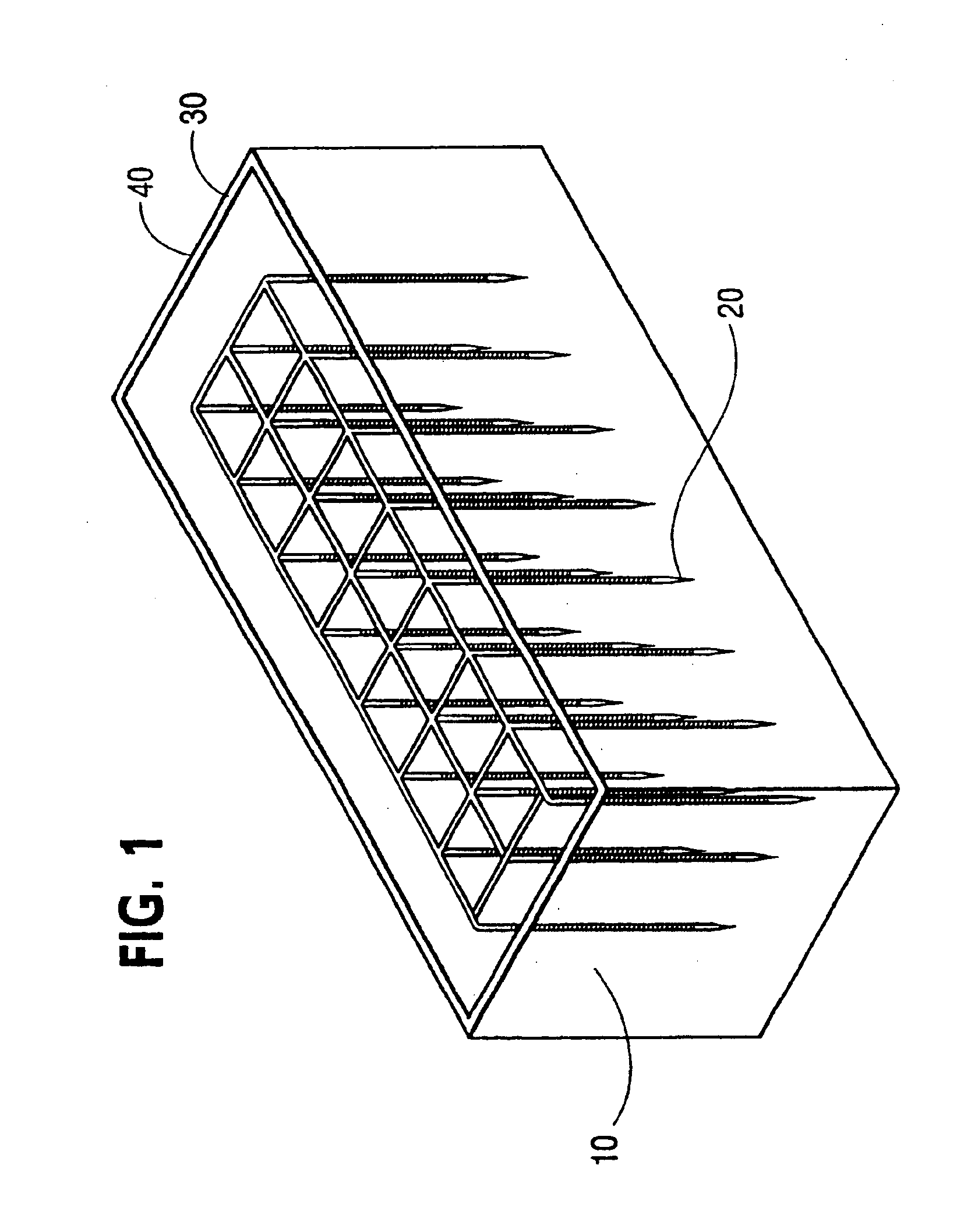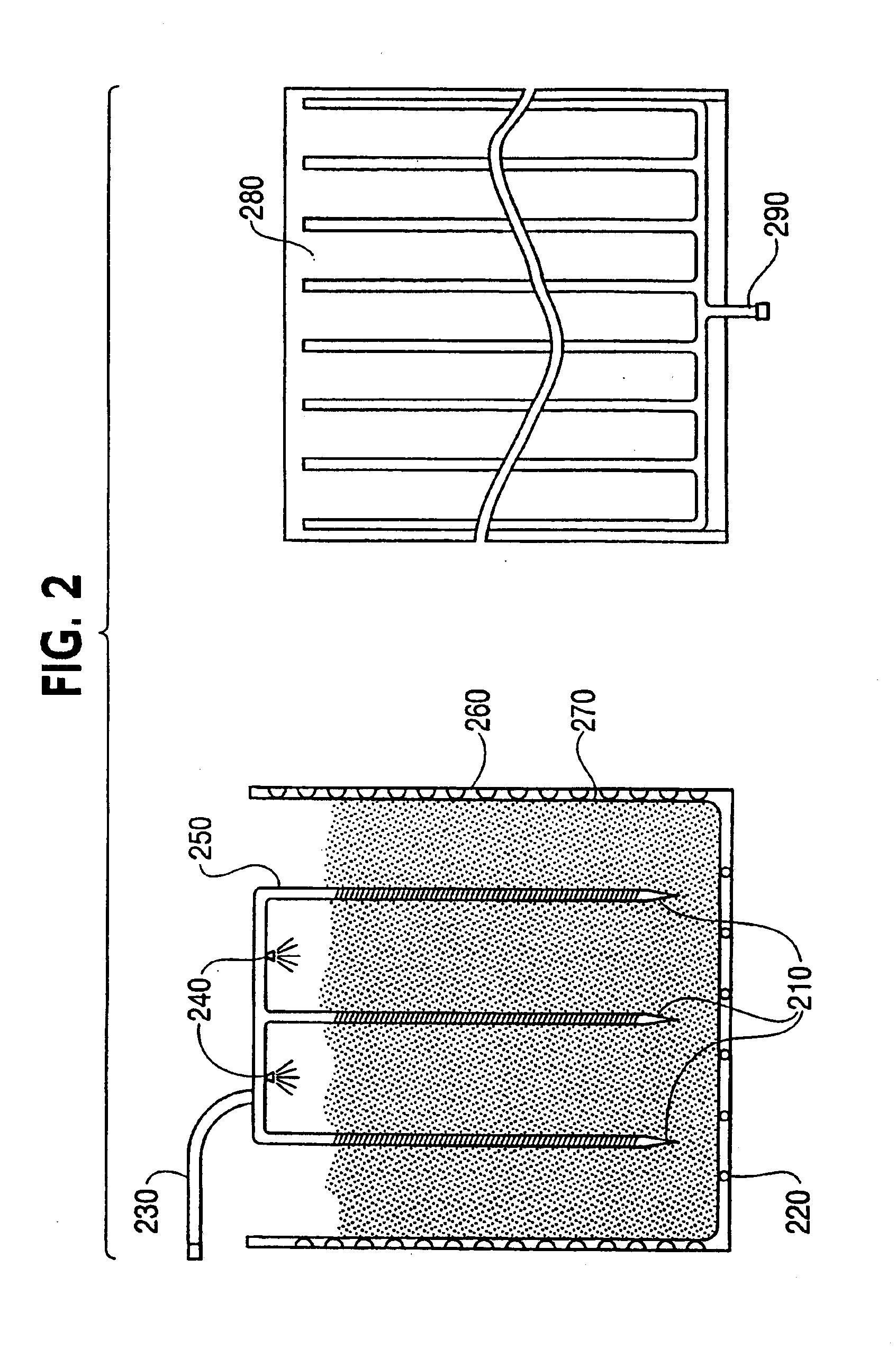Reclamation of materials in a closed environment with remedial water
a technology of closed environment and remediation water, applied in the direction of moving filter element filter, filtration separation, separation process, etc., can solve the problems of contaminated sediment, billions of dollars of economic activity affected by contaminated sediment, and the loss of recreational and commercial fishing grounds, so as to achieve the effect of reducing the cost and reducing the cost of remediation
- Summary
- Abstract
- Description
- Claims
- Application Information
AI Technical Summary
Benefits of technology
Problems solved by technology
Method used
Image
Examples
example 1
This example demonstrates that anodic and cathodic ECA water successfully remediated sludge samples by reducing the levels of poly aromatic hydrocarbons (“PAH”) from sludge.
In the example, 250 gram samples of sludge were obtained from PAH contaminated toxic sediments from a large harbor. Anodic and cathodic ECA waters were obtained with “Super oxide labo” series 2 model sold by Tomoe USA company and manufactured by Altech Ltd. in Fujisawa, Japan in accordance with the instruction manual supplied with this instrument. The unit was adjusted for a 15 minute processing time. Each 250 gm sample was mixed in a 500 ml beaker with 250 ml of either water for approximately 10 seconds. The samples were transferred to a stainless steel 500 ml centrifuge tube and spun at 6500 rpm in a Sorvall RC2 for 30 minutes. For a control, a third sample was treated with tapwater that supplied the ECA unit. After centrifugation, each sample was decanted and the wet sample sent to an outside laboratory for in...
example 2
This example demonstrates the use of high pH remedial water for removal of mercury from various sludges. ECA water was produced with an ARV Co. Limited, Model AL-2.0L unit Manufatured by ARV Co. Limited, (2811 Uchimichi Minami, Shinshiro-Shi Aichi, Japan). Approximately 500 g of mercury contaminated wet soil / sludge was washed over a 16 mesh teflon sieve with 5 liters of alkaline ECA water having a pH of 11.4. A gray precipitate and elemental mercury that formed were gravimetrically removed as residuals. After gravimetric removal of mercury, the remaining sample was washed with ECA water over a 100 mesh sieve (150 micron). Any visual mercury was again removed gravimetrically. The remaining sludge (i.e. minus 150 micron material) was placed into a 55 gallon drum having a geomembrane with a non-woven geotextile facing the inside to contain sediment. The drum was filled up to a 3 foot level. A No. 10 slotted PVC well point 2 inch in diameter and 3 feet in length (manufactured by Brainar...
example 3
In this example, electric arc furnace dust “EAF dust” was treated with ECA water to remove metal toxins. Alkaline ECA and acid ECA water was produced as described in the above examples. Alkaline ECA water was added to EAF dust at 80% wgt / wgt and then solids were rinsed thrice with tap water and decanted. Acidic ECA water was then added to the solid fraction at 80% by volume, rinsed thrice with tap water and decanted. No adjustment was made for pH. Samples were collected from the aqueous phase of each ECA water treatment, filtered, and analyzed for total lead, cadmium, and selenium. Solid phase samples also were collected and analyzed by TCLP metals analysis (Toxicity Characteristic Leaching Procedure EPA SW-846, Method 1311) and x-ray diffraction for qualitative speciation of lead, cadmium and selenium. Untreated EAF dust also was analyzed.
The TCLP analysis results of EAF dust before and after treatment are shown below.
EAF Dust Before TreatmentEAF Dust After TreatmentLead1200mg / l93m...
PUM
| Property | Measurement | Unit |
|---|---|---|
| depth | aaaaa | aaaaa |
| depth | aaaaa | aaaaa |
| depth | aaaaa | aaaaa |
Abstract
Description
Claims
Application Information
 Login to View More
Login to View More - R&D
- Intellectual Property
- Life Sciences
- Materials
- Tech Scout
- Unparalleled Data Quality
- Higher Quality Content
- 60% Fewer Hallucinations
Browse by: Latest US Patents, China's latest patents, Technical Efficacy Thesaurus, Application Domain, Technology Topic, Popular Technical Reports.
© 2025 PatSnap. All rights reserved.Legal|Privacy policy|Modern Slavery Act Transparency Statement|Sitemap|About US| Contact US: help@patsnap.com



